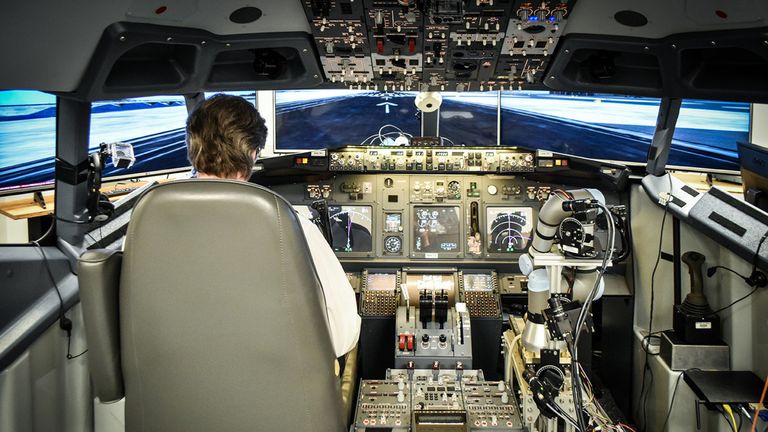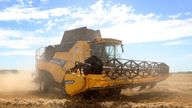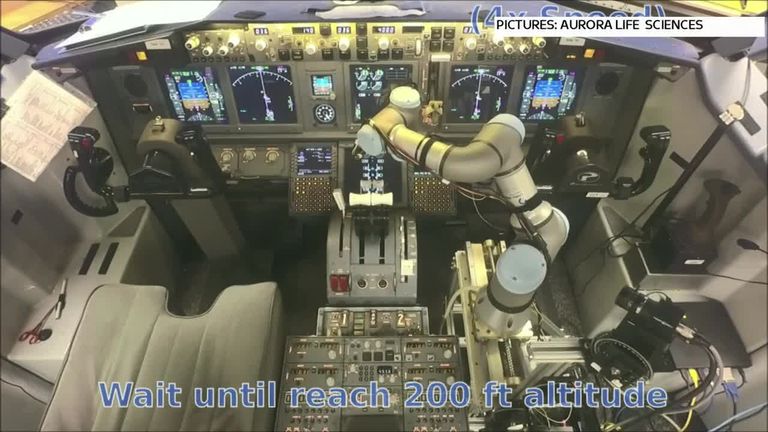Robot co-pilot successfully flies and lands Boeing 737 in simulator
The research was funded by US military research agency DARPA, which previously funded the development of the internet.
Wednesday 17 May 2017 11:35, UK
A robotic co-pilot has managed to fly and land a Boeing 737 in a flight simulator as part of a US military-funded project.
The automated system was designed by Aurora Flight Sciences and is part of a research project which would promote more automation on existing aircraft.
Civilian and military aircraft are expensive to operate and require intense and skilled human labour to react properly in unexpected situations.
Named ALIAS (Aircrew Labour In-Cockpit Automation System), the robotic system can help a pilot fly and even land a Boeing 737.
From the co-pilot's seat, ALIAS uses machine vision in which the computer running the system will take and understand visual input, essentially seeing things just as a human would.
In addition, it can manipulate the flight controls just like a human.
Similar to the Amazon Alexa voice command assistant, it is capable of speech recognition and speech synthesis, formulating responses to communicate with the pilot.
"Having successfully demonstrated on a variety of aircraft, ALIAS has proven its versatile automated flight capabilities," said John Wissler, Aurora's vice president of research and development.
"As we move towards fully automated flight from take-off to landing, we can reliably say that we have developed an automation system that enables significant reduction of crew workload."
The work was completed for a project for the Defence Advanced Research Projects Agency (DARPA) in the US.
DARPA, the US military's research wing, has supported projects which have been useful in non-military scenarios, including the ARPANET, the earliest predecessor of the internet.
The aims for ALIAS include it ultimately supporting the execution of an entire mission from take-off to landing, even in the face of serious aircraft system failures.




